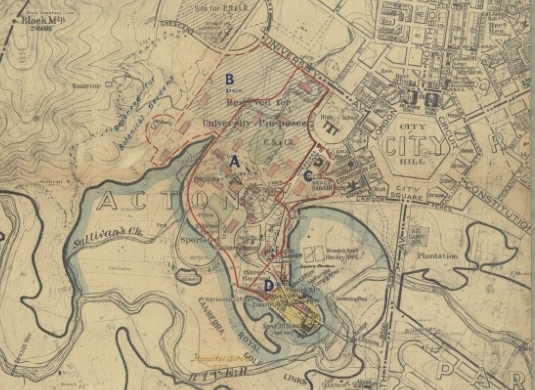May 2019
Higher Ground
The campaign for a local university site
(Source: PC21/7)
Plans for Canberra have always included land set aside for higher education. The Griffins’ competition entry designated the area around Acton as a suitable site for a university. By the late 1920s the Canberra University College, under the auspices of the University of Melbourne, was providing some university level courses, but with no immediate plans for a local university, the Canberra Times reported that the reserved area at Acton was being ‘adjusted’ to make room for other developments, including the Royal Canberra Community Hospital and private residences for high ranking government officials.
This was a situation the Council of the Canberra University College had sought to remedy since it identified the need for a full university in a 1934 report. With education playing such a vital role in our city, the plans to develop Canberra’s first University site have been chosen as ArchivesACT’s May Find of the Month.
Remember the days of the old schoolyard
In 1926, keen to support education in our community, the Federal Capital Commission undertook an inspection of schooling in the Territory. The review encompassed all 12 territory schools in the, which between them shared the enrolment of around 1000 students. It’s hard to imagine a time when all the students of the territory could fit into just one of our larger local schools today! These schools mostly provided primary education. The review found that while high school education was moving ahead and looked promising, the lack of higher education had been noted by the community:
At this stage, of course, the parent must reconcile himself to a severance of the family tie if the student is to essay a University course. All share the hope that a local University course will be available before many years have passed, but in the meantime may take solace from the reflection that they are in no worse position in this connection than half the population of Australia, who in similar circumstances must negotiate the same minor upheaval in their domestic affairs.
Despite this finding it would be another few years before the gazettal of the Canberra University College Ordinance 1929 to ‘provide for the establishment of a University College and for other purposes.’ This legislation started the process to assess and plan for opportunities for higher learning in Canberra. The Council of the University College was the governing body, and its membership included a ‘who’s who’ of local academia. Sir Robert Garran, Manning Clark, Pattie Tillyard, Lindsay Pryor, Heinz Arndt and H.F.E. Whitlam, the father of young Gough, were just some of the serving members.
Working out of the Telopea School, the Canberra University College provided its first classes in 1930. With no grounds of its own, it was forced to operate after hours, providing opportunities for locals to study part-time, and enabling public servants to continue their studies if transferred to Canberra by the Commonwealth Government.
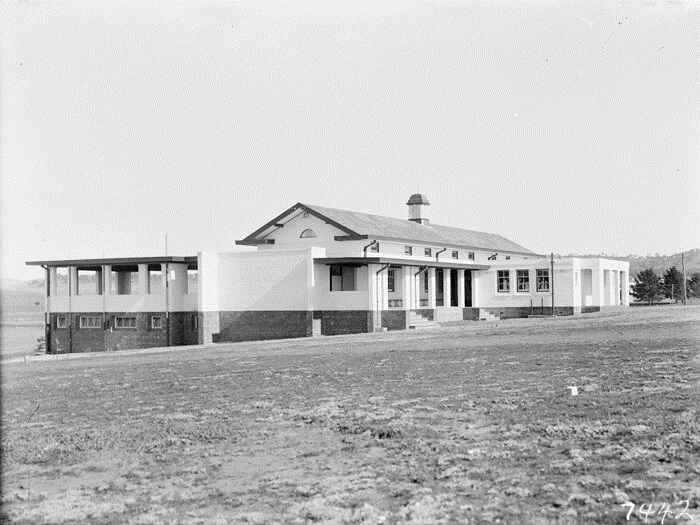
Telopea Park School, New South Wales Crescent, Barton c1921-1935
(Source: National Archives of Australia - A3560, 7442)
Build it up, build it up, build it higher
By 1939, with the site still planned but not developed, the Council of the University College was concerned that Canberra was at a size where ‘an adequate and suitable area for university purposes’ was necessary for its continued growth and cultural success. Increased reports of building developments in the Acton site was causing some concern as the dream of a suitable campus seemed at risk. The Council began pressing the Department of the Interior for action, asking that the Government involve it in any development decisions before the possibility of a ‘University worthy of the City’ was made impossible.
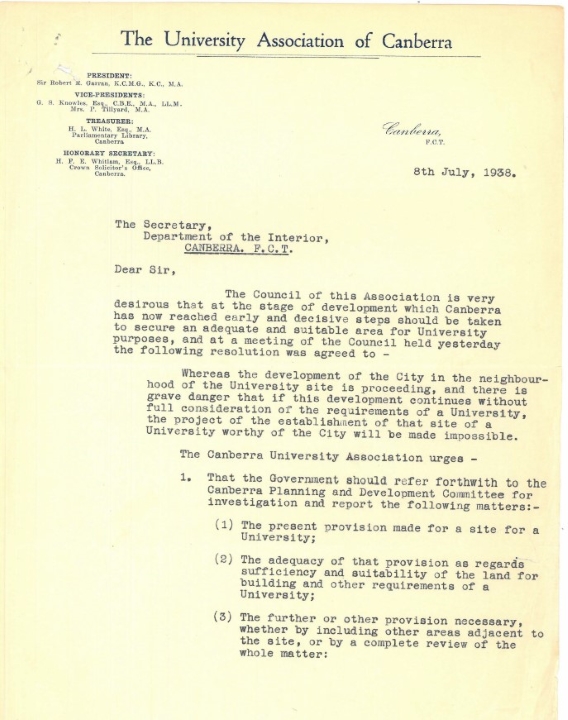
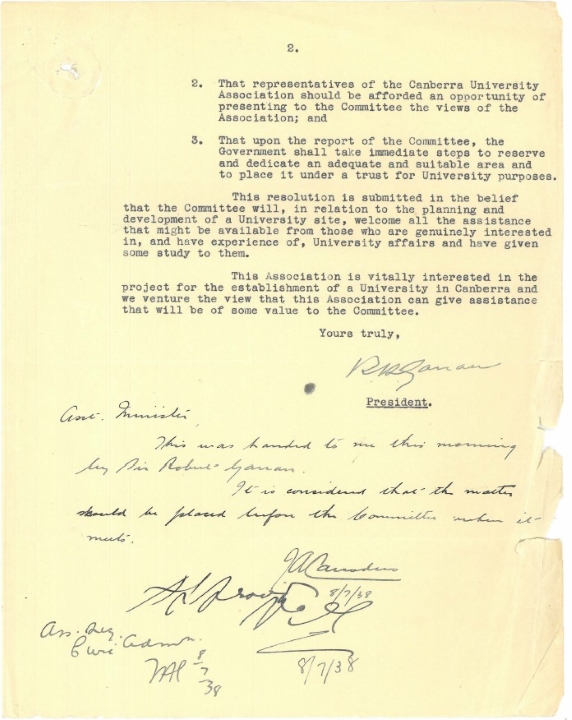
(Source: PC21/7)
The Department prepared a preliminary assessment of the site and forwarded it to the National Capital Planning and Development Committee. The plan below outlines its initial suggestions:
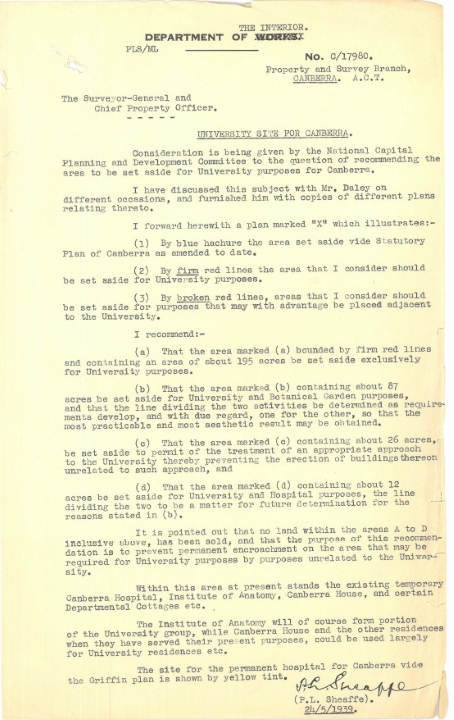
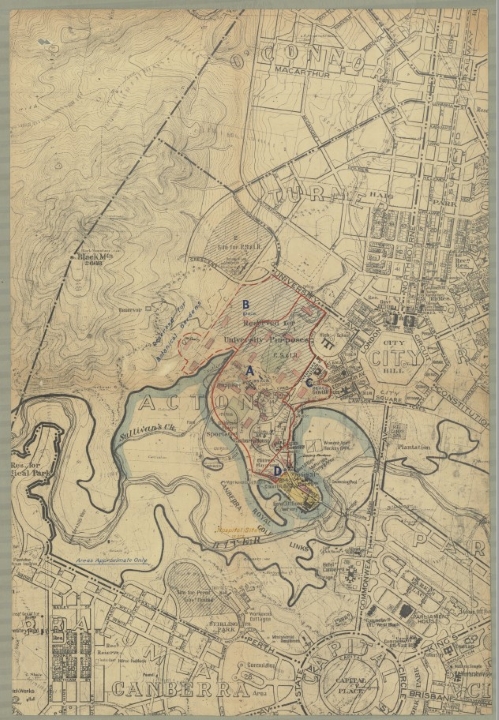
(Source: PC21/7)
This plan was not considered acceptable by the NCPDC and it would in fact take many years before agreement could be reached between the various interested parties. Disagreements between the NCPDC and the Council were reported by the media. By this time, the war would also cause delays, with the NCPDC noting that the project would be best undertaken post war.
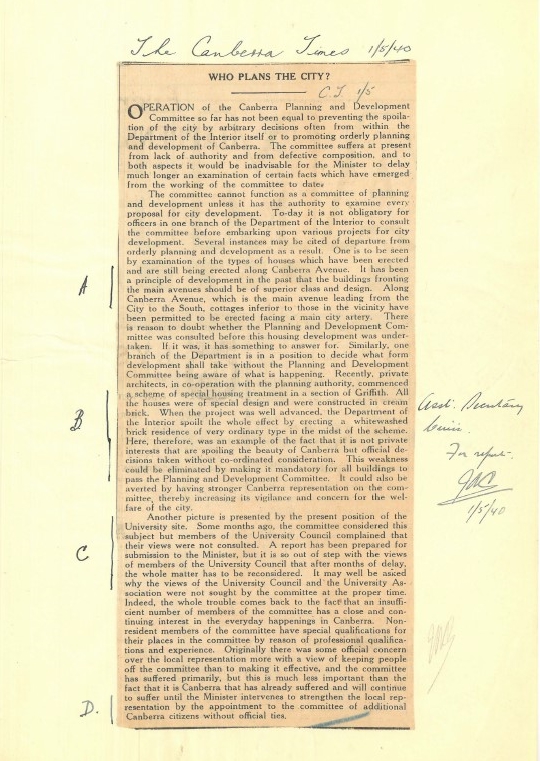
(Source: PC21/7)
In 1942, after multiple attempts to agree on the site boundaries, a meeting between the Council and the NCPDC took place and agreement was finally reached on the suggested area.
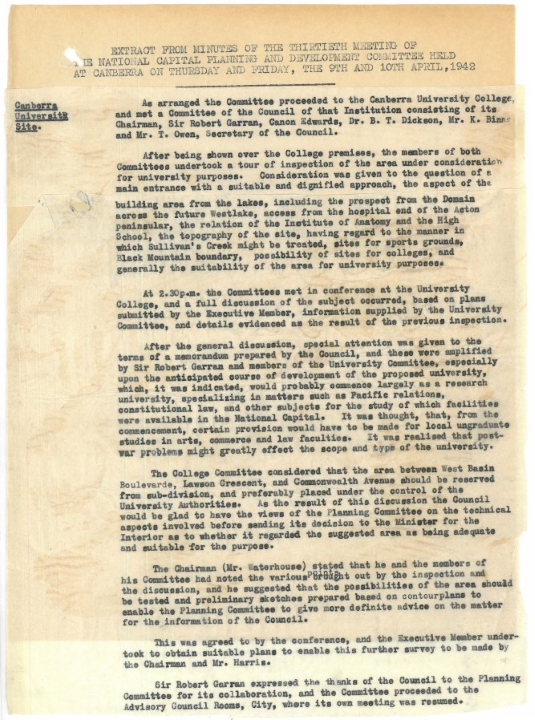
(Source: PC21/7)
A Sydney architect by the name of R. Keith Harris, who had previously worked on the University of Sydney site, was contacted to prepare a second plan. He started by researching other university sites including Berkley, Oxford, Sydney, Cambridge and British Columbia , and developed a new sketch suggesting additional areas to be reserved for future development.
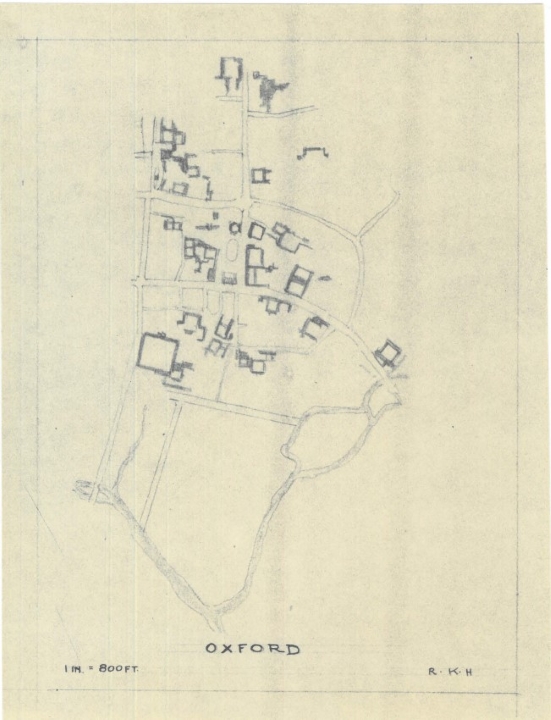
(Source: PC21/7)
Based on this research the following mutually acceptable schematic plan was finalised in 1942:
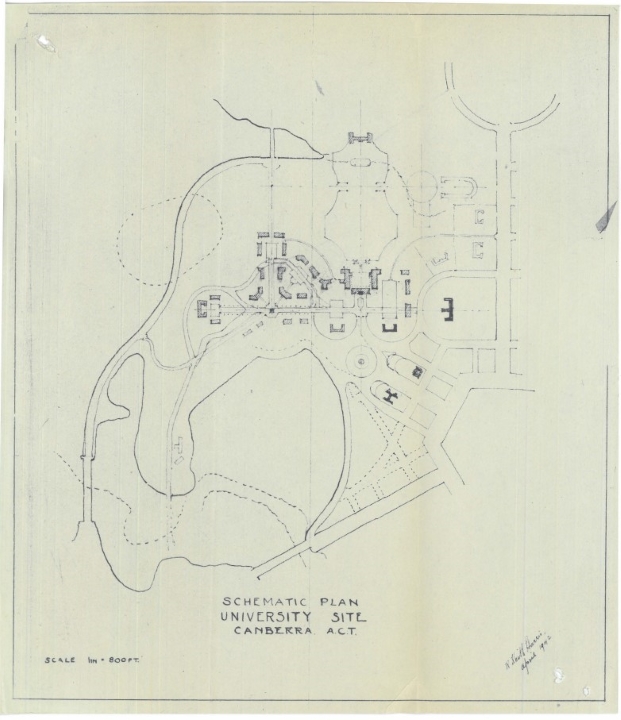
(Source: PC21/7)
Why can’t we be friends?
With an agreement in place, and a submission before the Minister, the Council continued planning for the site. Priority was being given to the development of facilities to suit local undergraduate studies in arts, commerce and law, although it was noted that post-war problems might affect both the scope and type of studies offered by the college. However, in June 1943 a submission for a botanic garden saw the plans altered as the boundaries of the site were once again disputed. The schema for the botanical gardens was prepared by Dr B.T. Dickson, who was also a member of the Council, and as such was aware that this new plan would encroach upon the agreed site. The other members of the Council were unimpressed. Citing Griffin’s plans for a botanic garden, and his understanding that it would share an association with the future university, Dr Dickson stuck to his guns. After some negotiation for additional land alongside University Avenue, and entrance rights to the grounds with no throughways, the boundaries were redrawn to allow for access to the Black Mountain site.
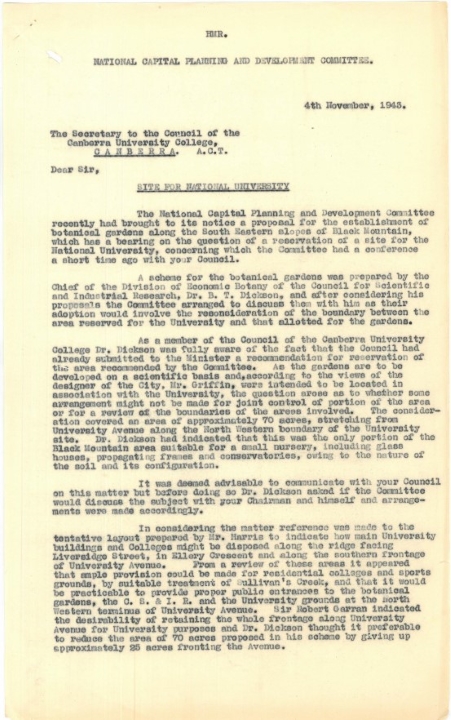
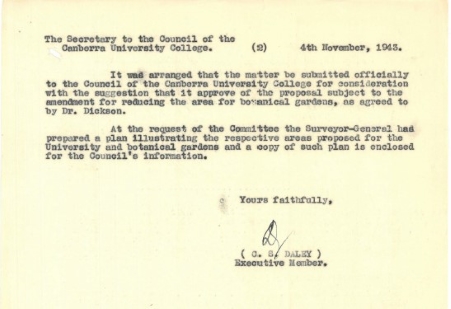
(Source: PC21/7)
In 1946 new legislation had been passed for the establishment of a National University, and funding was finally provided for the site. Consequently, the responsibilities of the Council for the Acton site were passed on to the newly established interim Council of the ANU, although the college would continue as in independent entity until 1960. Soon after that, a Canberra College of Advanced Education was on the horizon, and a search for a new site of higher education in Canberra would begin.
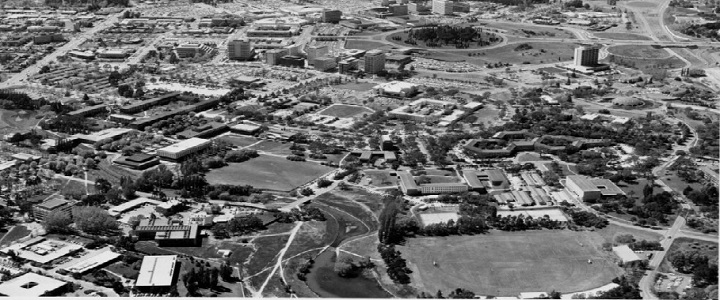
(Source: ArchivesACT, Flickr)
Did you plan or work on the ANU site?
Drop us a line at archives@act.gov.au or tweet a photo and don’t forget to include @ArchivesACT.

Ready to start your own research?
Contact us through our Request a Record service and we will be happy to help.
Files
Links to articles
EDUCATIONAL SYSTEM (1926, November 25). The Canberra Times (ACT : 1926 - 1995), p. 9. Retrieved April 27, 2019, from http://nla.gov.au/nla.news-article1208844
THE TERRITORY FOR THE SEAT OF GOVERNMENT. (1929, December 19). Commonwealth of Australia Gazette (National : 1901 - 1973), p. 2592. Retrieved April 27, 2019, from http://nla.gov.au/nla.news-article232542949
Links to websites
Canberra University College, Australian National University: http://press-files.anu.edu.au/downloads/press/p126741/pdf/ch1018.pdf
Our History, Australian National University: https://www.anu.edu.au/about/our-history
Walter Burley Griffin and the design of Canberra – Fact sheet 95, National Archives of Australia: http://www.naa.gov.au/collection/fact-sheets/fs95.aspx
Photo credits
National Archives of Australia: Telopea Park School, New South Wales Crescent, Barton c1921-1935. A3560, 7442
ArchivesACT: NDC 3172/21 - CITY - Aerial from over ANU - October 1977
Previous Find of the Month
2008 2009 2010 2011 2012 2013 2014 2015 2016 2017 2018 2019
File Readers/Viewers
If you do not already have compatible software on your computer, free file readers/viewers can be downloaded from the following links.
 PDF files require Adobe Acrobat Reader
PDF files require Adobe Acrobat Reader PPS files require Microsoft PowerPoint Viewer
PPS files require Microsoft PowerPoint Viewer XLS files require Microsoft Excel Viewer
XLS files require Microsoft Excel Viewer

